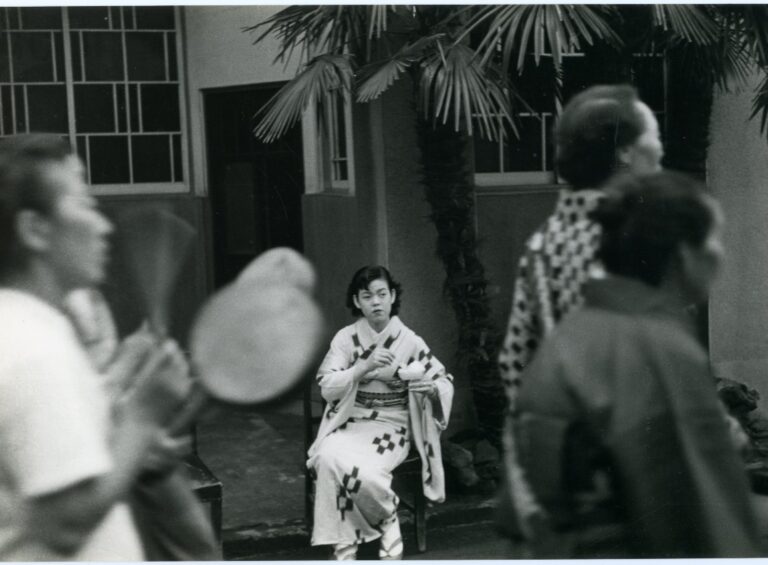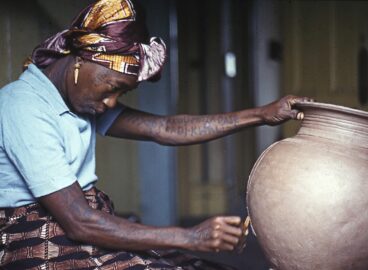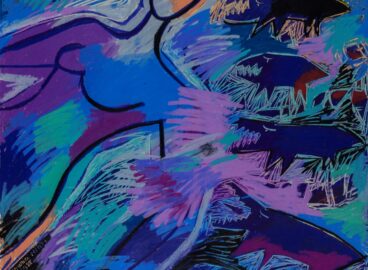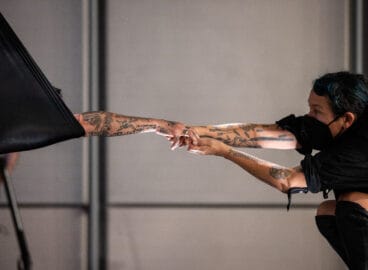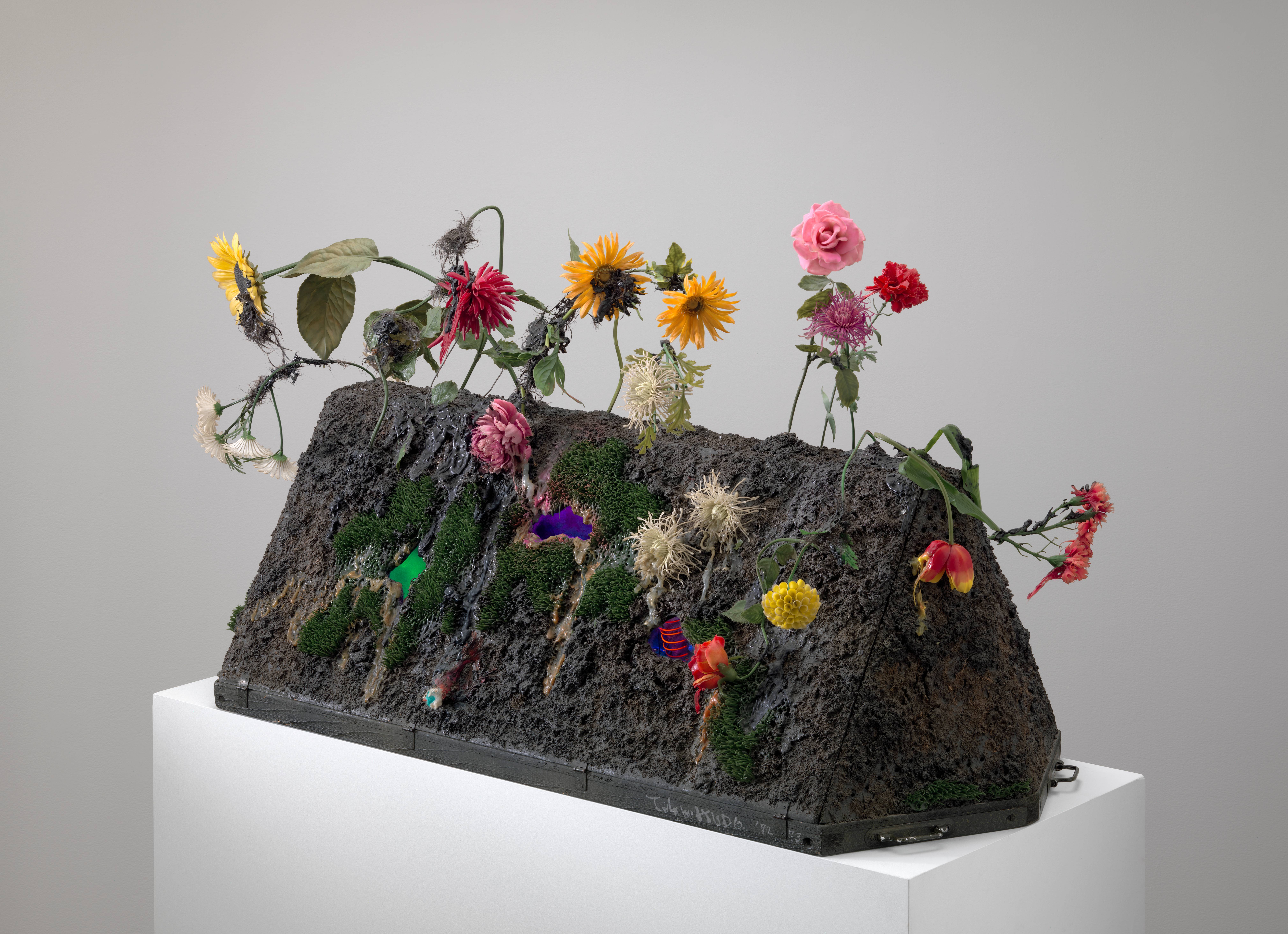The end of World War II found Japan a defeated nation under American occupation. Photography became a medium for social commentary, reflecting Japan’s shifting political and cultural landscape. Japanese photographers attempted to face the concrete reality of a postwar society, turning their focus to the lives of everyday people, especially those in the lowest social classes, such as beggars, orphans, and prostitutes.1Doryun Chong et al., eds., From Postwar to Postmodern, Art in Japan, 1945–1989: Primary Documents (The Museum of Modern Art, 2012), 50. This movement, sometimes referred to as “beggar photography,” gained prominence through published series in the magazine Camera (カメラ) (1949–50), such as Ihei Kimura’s New Tokyo Album (新東京アルバム / Shin Tōkyō Arubamu) and Ken Domon’s City (都市 / Toshi). However, this “social realism” movement was not simply another documentary style for depicting objective reality.2Chong et al., From Postwar to Postmodern, Art in Japan, 58. The photographers’ goal was to incorporate their subjective perspectives into their work and to provoke social change by doing so.
Artistic photobooks in Japan had originated some years earlier, when photographers and architecture students who had studied at the Bauhaus returned home with modernist ideas. Publications like Sensation of Flight (詩画集 飛行官能 / Hiko Kanno) (1934) and New Compositions of Beauty of Human Anatomy (人体美の新構成 /Jintaibi no Shin Kōsei ) (1932) were part of this avant-garde movement influenced by European photography.3See Kaneko Ryuichi et al., The Japanese Photobook, 1912–1990, trans. John Junkerman and Matsumoto Kaoru (Steidl, 2017). The Japanese military, recognizing photography’s potential early on, had been using photo publications for propaganda since the late 19th century.
After World War II, the photobook became a key outlet for expression outside the official or institutional art world, especially given the lack of a gallery infrastructure and the overall economic instability. Photobooks were often printed in relatively affordable editions, combining documentary content with a graphic-design sensibility. Notable examples include Hiroshi Hamaya’s Japan’s Back Coast (裏日本 / Ura Nihon) (1957) and Ken Domon’s (ヒロシマ / Hiroshima) (1958), both of which highlight social issues and underrepresented communities.4Ryuichi et al., The Japanese Photobook, 26.
In this earlier period, from the 1930s to the 1950s, the foundation was laid for the golden age of Japanese photobooks in the 1960s and 1970s, when the photobook became an artistic object in itself—the definitive expression of photography. Kikuji Kawada’s The Map (地図 / Chizu) (1965) epitomizes this shift. During this era, photographers challenged modern photography and documentary traditions, using abstraction and experimental visual language as forms of political and social critique. This trend culminated in the radical break marked by Provoke (1968–1970), a magazine that reshaped the trajectory of Japanese photography.
Despite photography’s growing role in postwar Japan, female photographers remained largely overlooked by art historians and critics. The 1950s saw significant changes in Japanese society, with women entering a wider range of occupations, including photography. However, their role in the context of photography was often limited to that of a studio assistant who primarily handled retouching for a male photographer. Moreover, it was a profession that many women abandoned upon marriage. While Japan’s first photographic school for women had opened in 1902,5Tokyo Photographic Studio and School for Women. it did so 40 years later than its male counterpart, reflecting the broader gender disparities in artistic and professional recognition. Within this male-dominated industry, women struggled to gain legitimacy as independent photographers.
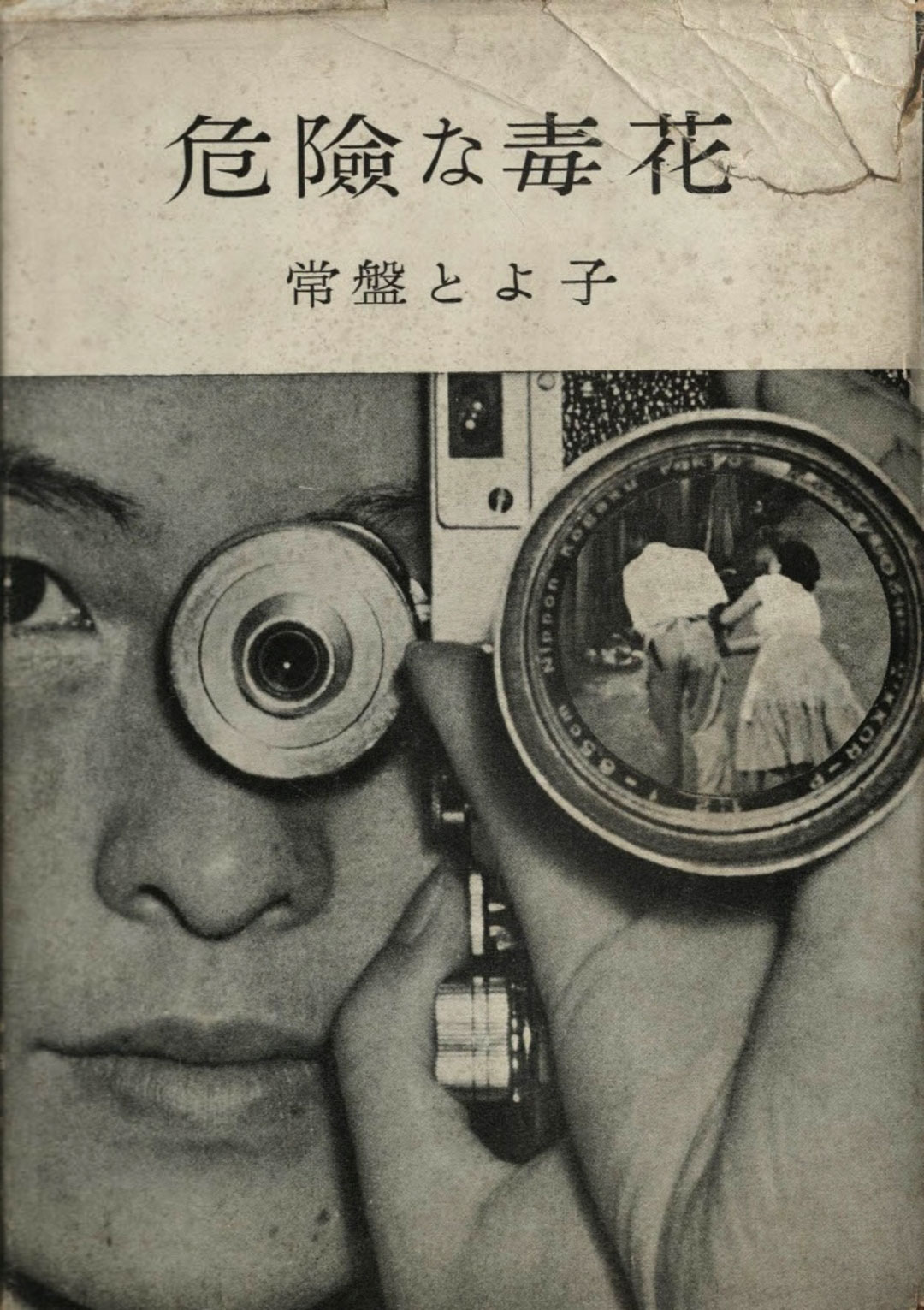
Toyoko Tokiwa (1928–2019) was born in Yokohama and grew up during the devastating years of war and occupation. She developed an early interest in photography, inspired by her elder brother who was also a photographer. After finishing high school, she studied home economics in Tokyo but defied family expectations to marry, choosing instead to pursue a career in photography. She joined the Shirayuri Camera Club (白百合カメラクラブ/ Shirayuri Kamera Kurabu), a social club that evolved into a learning hub where women practitioners honed their skills under the guidance of established male photographers. Tokiwa was interested in capturing the lives of working women, particularly those whose work involved their bodies. Through this focus, she critiqued the gendered division within postwar photography culture and asserted the subjectivity and agency of women photographers.6See Kelly Midori McCormick, “Tokiwa Toyoko, the Nude Shooting Session, and the Gendered Optics of Japanese Postwar Photography,” Japan Forum 34, no. 3 (2021): 383–411, https://doi.org/10.1080/09555803.2021.1923553.
Her series Working Women (働く女性 / Hataraku Josei) was published in the June 1957 issue of Women’s Review magazine (婦人公論 / Fujin Kōron). Carrie Cushman and Kelly Midori McCormick note that her work’s placement in women’s magazines rather than in photography publications shows that she was disregarded by photography historians of her time.7Carrie Cushman and Kelly Midori McCormick, “The Japanese Women Who Transformed Photography,” in I’m So Happy You Are Here: Japanese Women Photographers from the 1950s to Now, ed. Pauline Vermare and Lesley A. Martin (Aperture, 2024), 42. Working Women was exhibited in Tokyo in 1956 at the Konishiroku Photo Gallery in the district of Ginza. Critics at the time agreed that only a woman could have taken these photographs because a man would not have been able to access the spaces they document. Tokiwa, however, disliked the implication that a woman could only produce exhibition-worthy work when she photographed such subjects.8Cushman and McCormick, “The Japanese Women Who Transformed Photography,” 45. Shortly thereafter, when she was approached by publisher Mikasa Shobo to produce a photobook titled Dangerous Poisonous Flowers (危険な毒花 / Kikenna Adabana) (1957) based on the Working Women series, she became the first female photographer to publish a photobook in Japan.
While many male photographers of the time focused on postwar devastation, urbanization, and political protests, Tokiwa centered women’s everyday lives and labor. As one of few professional female photographers and someone working with explicitly gendered subject matter, she created a photobook that was not only formally democratic in its accessible format but also socially transgressive. In offering a female-centered narrative within a photographic documentary landscape overwhelmingly shaped by male perspectives, it challenged dominant visual and social hierarchies.
Tokiwa’s photographs align with social realism and emerging subjectivity movements of her time, yet they embody a radical form of empathy as a distinct way of seeing. In her work, empathy becomes a critical factor, and the photobook the platform upon which this vision unfolds most powerfully. Tokiwa’s portraits of sex workers and other working women resist voyeurism and instead foreground relational intimacy. Her lens does not objectify her subjects but rather invites the viewer into their world to bear witness. The sequential format and the physical intimacy between the viewer and the photographs—elements inherent in the photobook form—invite personal engagement, offering a more egalitarian viewing experience than is possible in an austere traditional gallery setting. In this way, Tokiwa subverted the visual conventions shaped by the “male gaze,” a concept introduced by Laura Mulvey in her influential essay “Visual Pleasure and Narrative Cinema” (1975), in which she argues that dominant visual culture tends to position women as passive objects of heterosexual male desire.9See Laura Mulvey, “Visual Pleasure and Narrative Cinema,” Screen 16, no. 3 (1975): 6–18, https://doi.org/10.1093/screen/16.3.6. This present essay argues that Tokiwa’s photographic disposition fleshed out, for the first time in the history of Japanese photography, a “female gaze,” one that centers empathy, subjectivity, and emotional resonance, and established a new approach to social documentary, one that I theorize as the “empathetic gaze.” The concept of the female gaze emerged as a counterpoint to Laura Mulvey’s framework. As filmmaker Jill Soloway describes it, the female gaze is a sociopolitical, justice-demanding way of art-making. It is a conscious effort to create empathy as a political tool. It changes the way the world feels about women when they move their bodies through the world, fully feeling themselves as the subject.10See “Jill Soloway: The Female Gaze,” Toronto International Film Festival, Master Class, live streamed September 11, 2016, YouTube, https://www.youtube.com/watch?v=pnBvppooD9I&ab_channel=TIFFOriginals.
Tokiwa’s Dangerous Poisonous Flowers deepens our understanding of the empathetic approach and exemplifies how the photobook served as its platform while also being a more democratic form of photographic expression. Unlike exhibitions, which are confined to specific spaces and audiences, the photobook allowed for broader circulation and accessibility, reaching viewers from diverse backgrounds. Publisher Mikasa Shobo was not primarily known for art or photography publications; indeed, after the war, the majority of its titles focused on popular literature and translations of works by English-language novelists, such as Ernest Hemingway, and catered to a general readership interested in fiction and Western ideas.11McCormick, “Tokiwa Toyoko, the Nude Shooting Session, and the Gendered Optics of Japanese Postwar Photography,” 388. We can assume that Tokiwa’s photobook reached a wide audience based on its publication history. While exact sales numbers are not available, the book was reprinted multiple times in 1957, the year it was published, suggesting significant circulation and sustained demand.12According to the book’s colophon in the copy acquired by MoMA’s International Program, the book was first published on October 20, 1957, with the 11th printing released less than a month later, on November 10, 1957. Toyoko Tokiwa, Kikenna Adabana [Dangerous Poison-Flowers] (Mikasa Shobo, 1957), 245. The photobook reached at least its eleventh printing that same year, indicating its widespread popularity and impact.
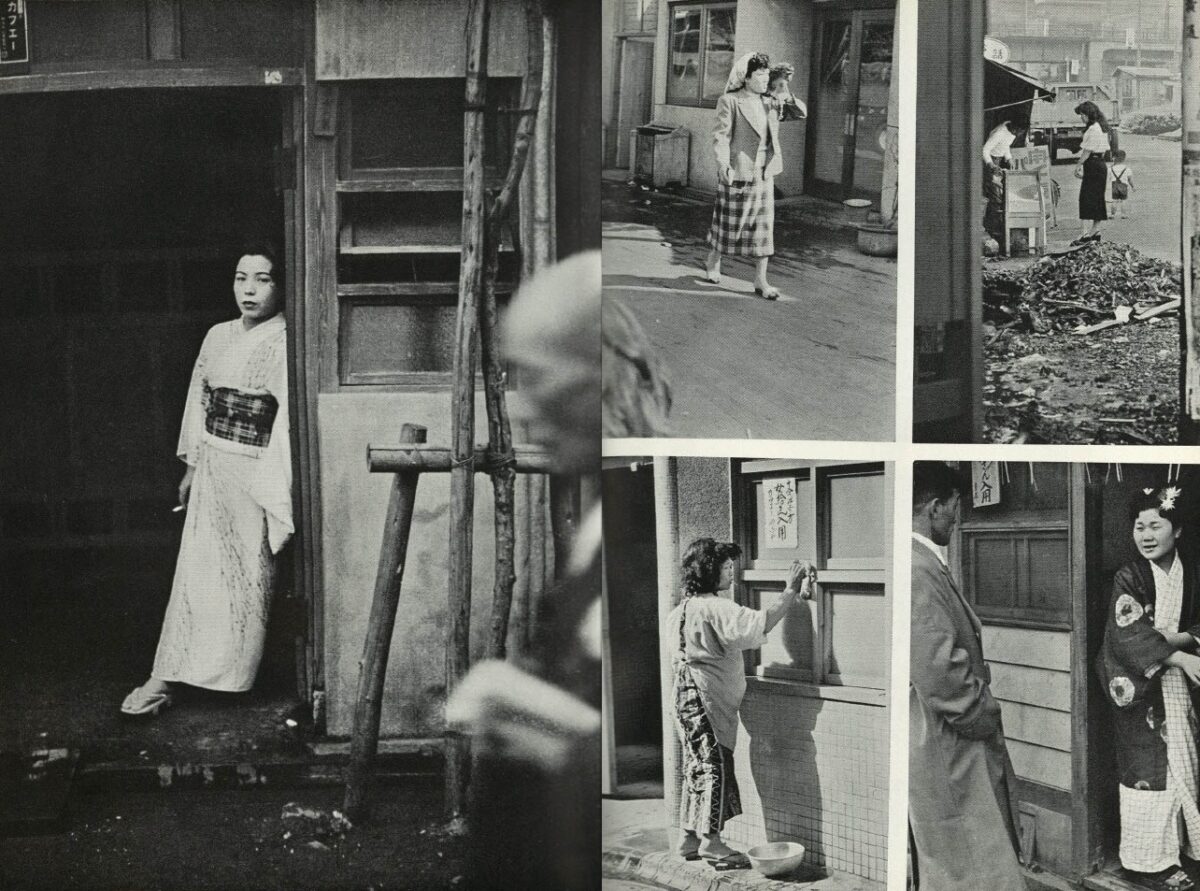
The title “Dangerous Poisonous Flowers” is a traditional euphemism for sex workers.13Pauline Vermare and Lesley A. Martin provide the English translation of the title. See Vermare and Martin, I’m So Happy You Are Here, 294. The cover of the book features a self-portrait of Tokiwa behind the lens, foregrounding her photographic labor and positioning her as another working woman (fig. 1). This image emphasizes her unique perspective, highlighting her identity as a female photographer. The close-up shot makes the image more relatable for women readers, who recognize themselves in the figure pictured. Inside Tokiwa’s lens, a photomontage shows a man and woman holding each other. But on closer inspection, it becomes clear that the man is forcing the woman to accompany him, dragging her in a way that suggests violence. Although Tokiwa disliked the image because it was staged (as she reveals in her interview with Kelly Midori McCormick14See “Toyoko Tokiwa in Conversation with Kelly Midori McCormick (2017),” in Vermare and Martin, I’m So Happy You Are Here, 393–96.), this image reinforces the theme of the book, addressing the struggles of being a working woman in a male-dominated world.
The book was printed using photogravure, a printing process that enriches the black tones and was often used at the time for magazines like Women’s Review (婦人公論 / Fujin Kōron) (1916–present) and Ladies’ Club (婦人倶楽部 / Fujin Kurabu) (1920–1988). This printing method, along with the arrangement of the images and choice of paper, mimics those publications in material and composition, perhaps catering to a female readership familiar with such formats. The predominantly dark photos heighten the atmospheric quality of the hidden world revealed in the images. The 248-page photobook unfolds like a memoir, with its extensive first-person narrative evoking the personal nature of a diary. This sense of intimacy is reinforced by its compact size (approximately 7 ½ × 5 ¼ inches), which invites physical closeness with the object, while the absence of borders around the photographs draws the reader into their world. Tokiwa’s autobiographical notes throughout the book enhance its journal-like quality, offering personal reflections on her early years, the process of photographing her subjects, and her evolving thoughts on photography and gender. This combination of text and image, a common style in photo publications at the time, creates a narrative experience that blends visual and written storytelling. The structure of the book—interweaving expansive text chapters with photographic sequences, each marking distinct phases in Tokiwa’s journey—further enhances the book’s diaristic character. The use of first-person narration and the short anecdotal captions accompanying some of the images make it feel as though Tokiwa has directly inscribed the pages, deepening the connection between her and the reader.
A substantial number of photographs in the book are focused on sex workers in the red-light district of Yokohama (fig. 2). The photobook also extends beyond this setting, capturing images of nude models engaged in photo sessions, female wrestlers, divers, and street performers, offering a broader perspective on women who earn a living by using their bodies (fig. 3).
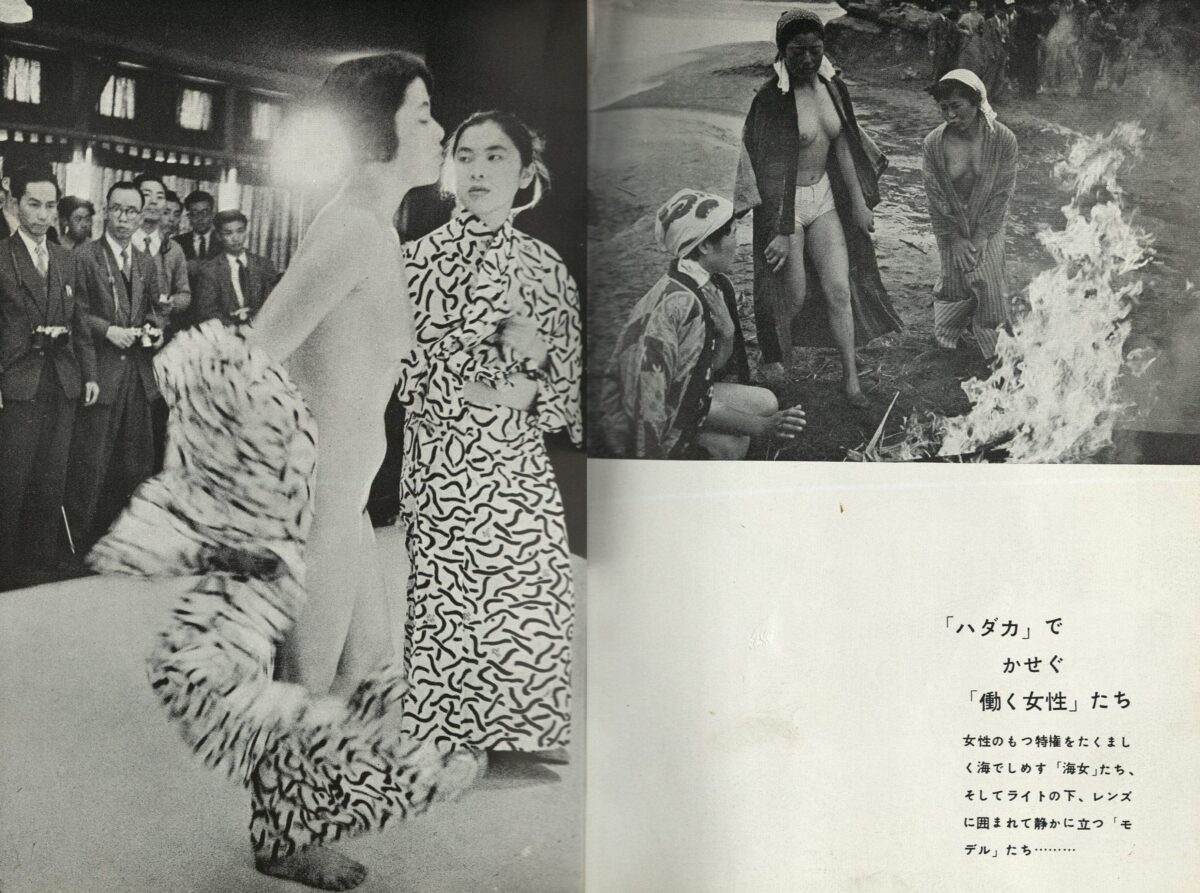
In the accompanying text, Tokiwa reflects on the challenges and dangers she faced while working, particularly within the red-light districts. Armed with her camera and dressed in a skirt and a pair of clogs, she wandered through these shadowy and often dangerous areas. It was precisely her appearance as a young woman that enabled her to move unnoticed and to gain the trust of the women she encountered. They welcomed her into their world and offered her glimpses into their private lives, willingly posing before her lens. “They trusted me because I was wearing a skirt. If I wore trousers, I would have been looked at with alarm,” she explained.15Tokiwa, Kikenna Adabana, 12. Translation generated by Google Lens and edited by the author.
As we flip through Tokiwa’s photobook, we witness her evolution from detachment to empathy. Initially, she resents her subjects for what she perceives to be their betrayal of nation and dignity, a feeling evident in her early photographs, most of which were taken from a distance. In figure 4, the prostitutes appear as background figures, seemingly barely noticed by the blurry, shadowy figures in the foreground, perhaps alluding to society’s disregard for their existence. Over time, Tokiwa builds connections with her subjects, capturing them with increasing understanding and compassion. As her work progresses, she moves closer, entering their personal spaces and thereby conveying a more firsthand perspective (fig. 5).
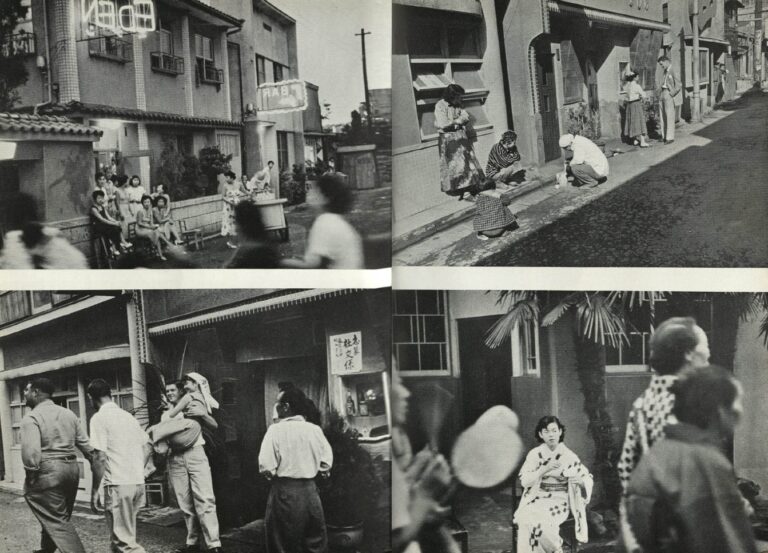
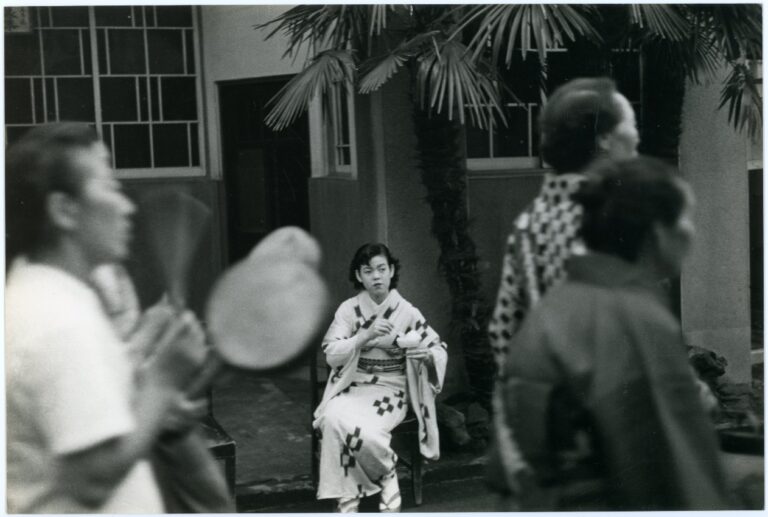
When comparing Tokiwa’s images to those of her contemporary male photographers, such as Shomei Tomatsu (1930–2012), a leading figure in postwar social documentary, a noticeable difference emerges. In Tomatsu’s Prostitute, Nagoya (1958), the artist’s famous photograph of a prostitute, his subject appears defensive, her expression suggesting that she is filled with anger at or at least disapproval of the male photographer’s incursion into her private moment. In contrast, Tokiwa captured her subjects in more relaxed, unguarded moments, often during their free time. In her photographs, her subjects meet her gaze, and we sense in this encounter a feeling of approval or trust. In figure 5, Tokiwa has entered the women’s home, where the central figure (on the left), who appears laid-back, is enjoying a drink and a cigarette. She is surrounded by other women, who also seem to be engaging in their usual routines. Tokiwa’s presence feels natural, as if she is part of their world. As McCormick notes, “[Tokiwa] shifts her position from repulsed voyeur to a photographer with a consciousness.”16McCormick, “Tokiwa Toyoko, the Nude Shooting Session, and the Gendered Optics of Japanese Postwar Photography,” 406. Ultimately, in shedding light on the realities of sex workers’ everyday lives, using photography as a tool for awareness and advocacy, Tokiwa’s work goes beyond documentation. As the photographer comments in her book, “When I first started, I didn’t feel love for them, maybe hatred. However, when I got into their lives, their rooms, and had tea with them, I realized that these dogs were humans after all. . . . I take these pictures to raise awareness of the negative aspects of the prostitution system.”17Tokiwa, Kikenna Adabana, 118–20. Translation generated by Google Lens and edited by the author.
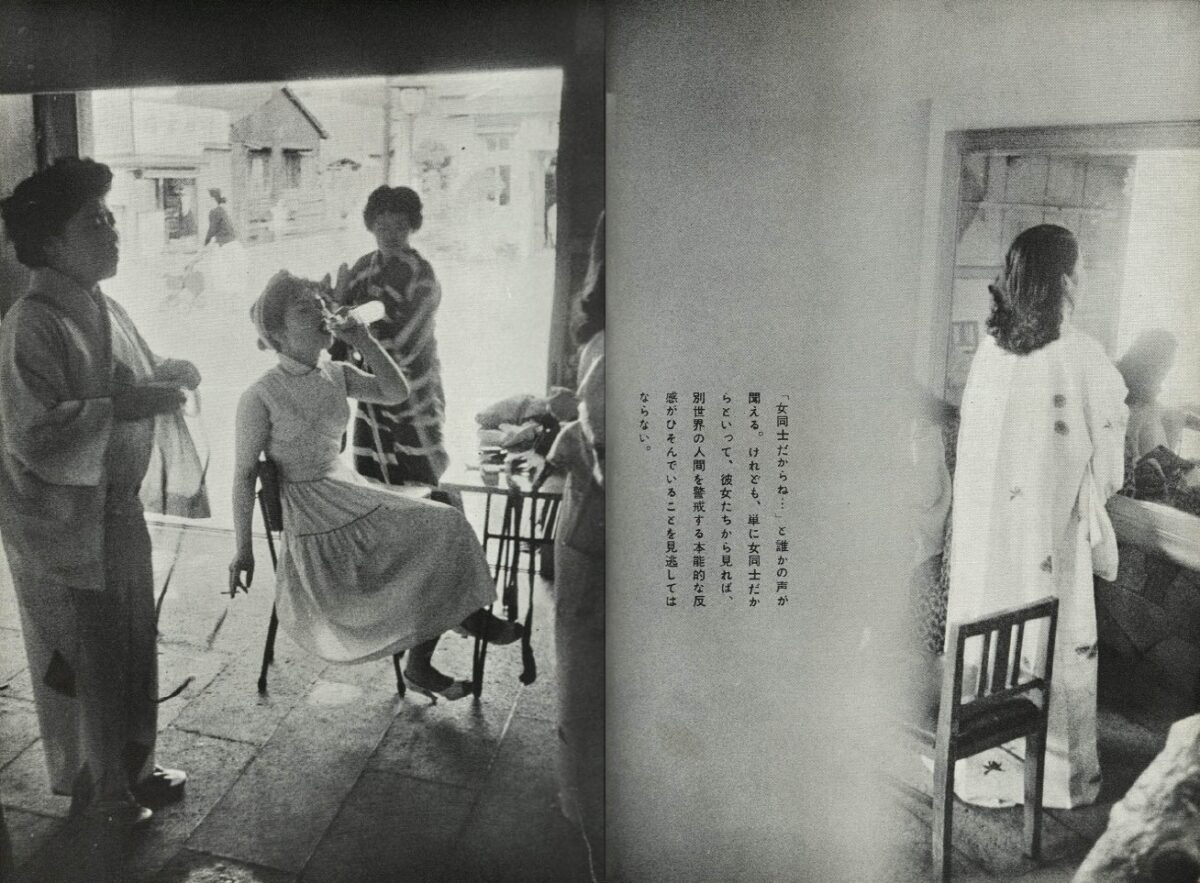
Tokiwa’s ability to gain her subjects’ trust, to position herself as a participant rather than an intruder in their world, enabled her to photograph them in their intimate settings, capturing their true nature and emotions through her lens. This approach constitutes what can be understood as a “female gaze.” Unlike the traditional male perspective, which often imposes power dynamics of control and objectification, Tokiwa’s images center subjectivity and empathy and aim at awareness. Her camera creates space for the women to appear as full, complex individuals rather than symbols of marginalization or desire. This empathetic way of seeing not only challenges the viewer to look at these women differently but also reinforces the role of photography as a tool for sociopolitical change.
Tokiwa experienced the devastation of World War II, including the bombing of her home during the Yokohama Great Air Attack in 1945, which killed her father. After the US military took control of Yokohama’s harbor, she developed a deep resentment toward American soldiers and channeled this anger through photography. As she explains in Dangerous Poison Flowers, “I took my camera and went to the Yokohama port to comfort my feelings of hatred against the American soldiers while pointing my camera at them.”18Tokiwa, Kikenna Adabana, 145. Translation generated by Google Lens and edited by the author.
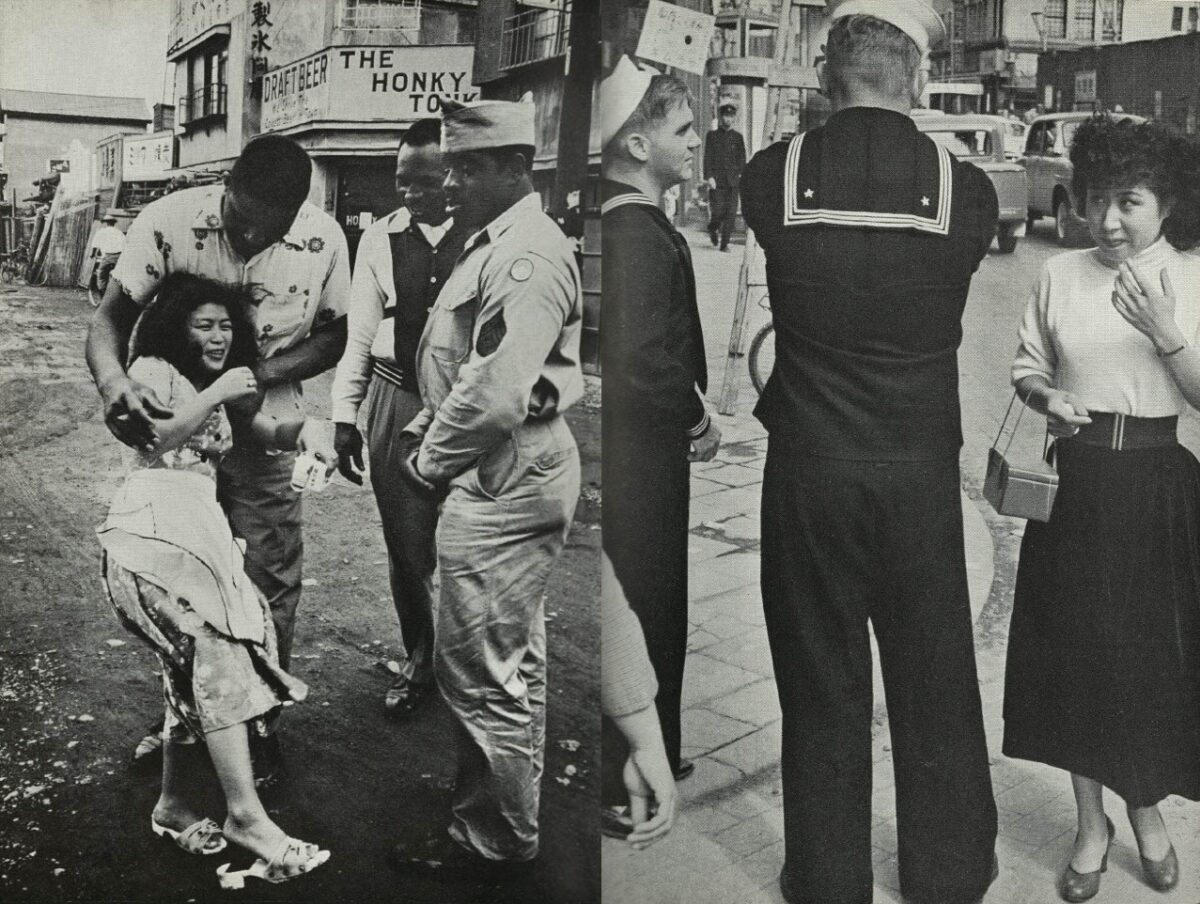
Tokiwa’s photographs document US soldiers exploiting Japanese sex workers in the red-light districts. This subject matter parallels the work of male photographers like Shomei Tomatsu, Takuma Nakahira (1938–2015), and Daidō Moriyama (born 1938), who likewise captured the impact of the American occupation of Japan. Ross Tunney describes the US military bases in Japan as embodying the “symbolic rape” of Japan, reflecting the fears of “miscegenation” held by many Japanese people.19Ross Tunney, “Liminal Spaces: US Military Base Towns in Tōmatsu Shōmei’s Japan,” paper presented at the 18th Biennial Conference of the Japanese Studies Association of Australia at the Australian National University, July 8–11, 2013, https://www.academia.edu/72836529/
Liminal_Spaces_US_Military_Base_Towns_in_Tōmatsu_Shōmeis_Japan_. In Tokiwa’s images (figs. 6, 7), this symbolic rape is powerfully evoked, with the Japanese women depicted as both victims and symbols of a coerced and weakened Japan. Tokiwa’s focus, however, is not on the soldiers but rather on the women’s faces and postures. This shift in perspective gives the women agency, transforming them from passive victims into individuals marked by resilience and strength.
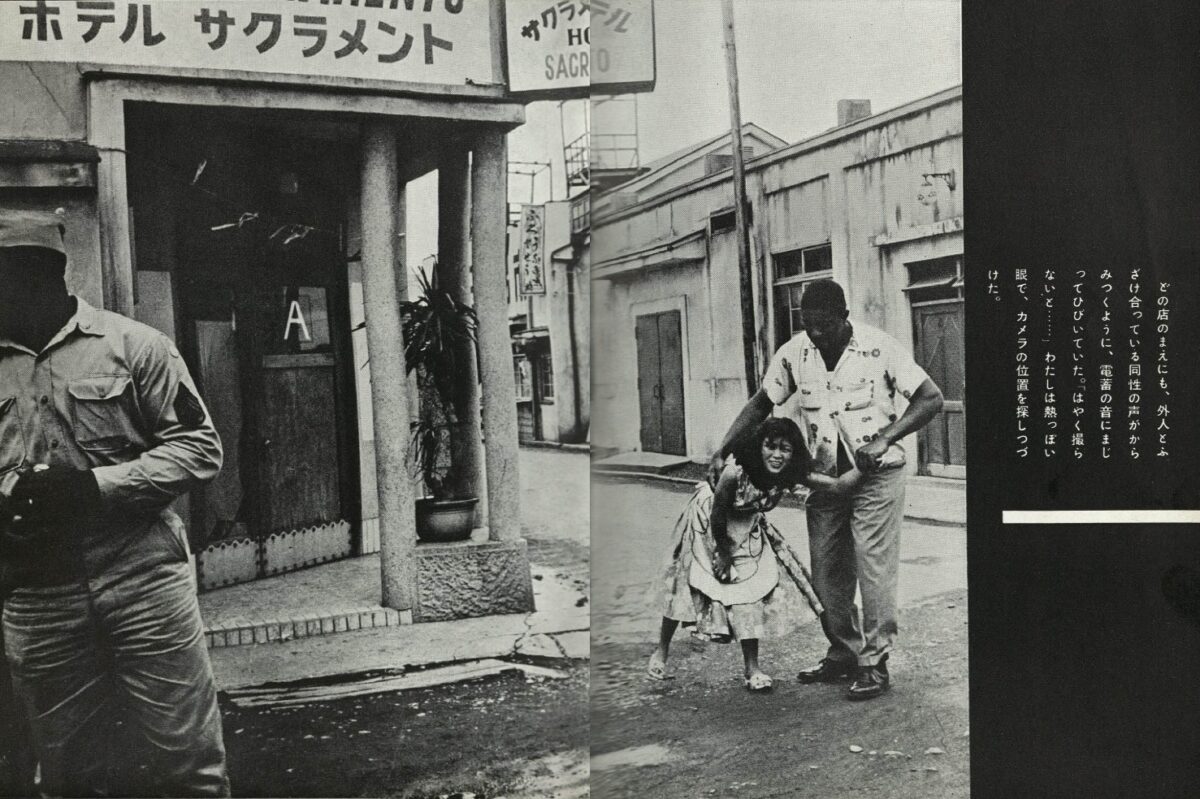
In the second photo sequence in the book, we follow Tokiwa as she enters a hospital in which prostitutes are seeking medical treatment. Hiding her camera under a white coat, she pretended to be the doctor’s assistant, which enabled her to capture intimate and disturbing scenes like the moment of injection. As a female photographer, Tokiwa felt a unique connection to these women, seeing and relating to them in a way that male photographers could not. She sought to reveal their lives “under their skin,” to show their vulnerability.20“There must be a real difference between how men see women and how I see them as someone of the same sex. These women never reveal to their male customers the true fabric and life under their skin. Capturing and revealing this hidden side of women—something men would never discover—is deeply meaningful, even for men, but in a different way.” Tokiwa, Kikenna Adabana, 72. Translation generated by Google Lens and edited by the author. The women, who in most cases seem unaware of Tokiwa’s presence, appear vulnerable and tired. One image captures a woman who, having just received a penicillin shot, lies on a hospital bed with her face down and a cigarette in hand (fig. 9). Tokiwa has noted on the side of the image, “She looked like she was exhausted from living” and reveals that it was a scene that left a strong impression on her.21Tokiwa, Kikenna Adabana, 89. Translation generated by Google Lens and edited by the author. Depicting her subjects as patients offers an unconventional portrayal of prostitution while also alluding to the way prostitution is looked upon as a societal illness.
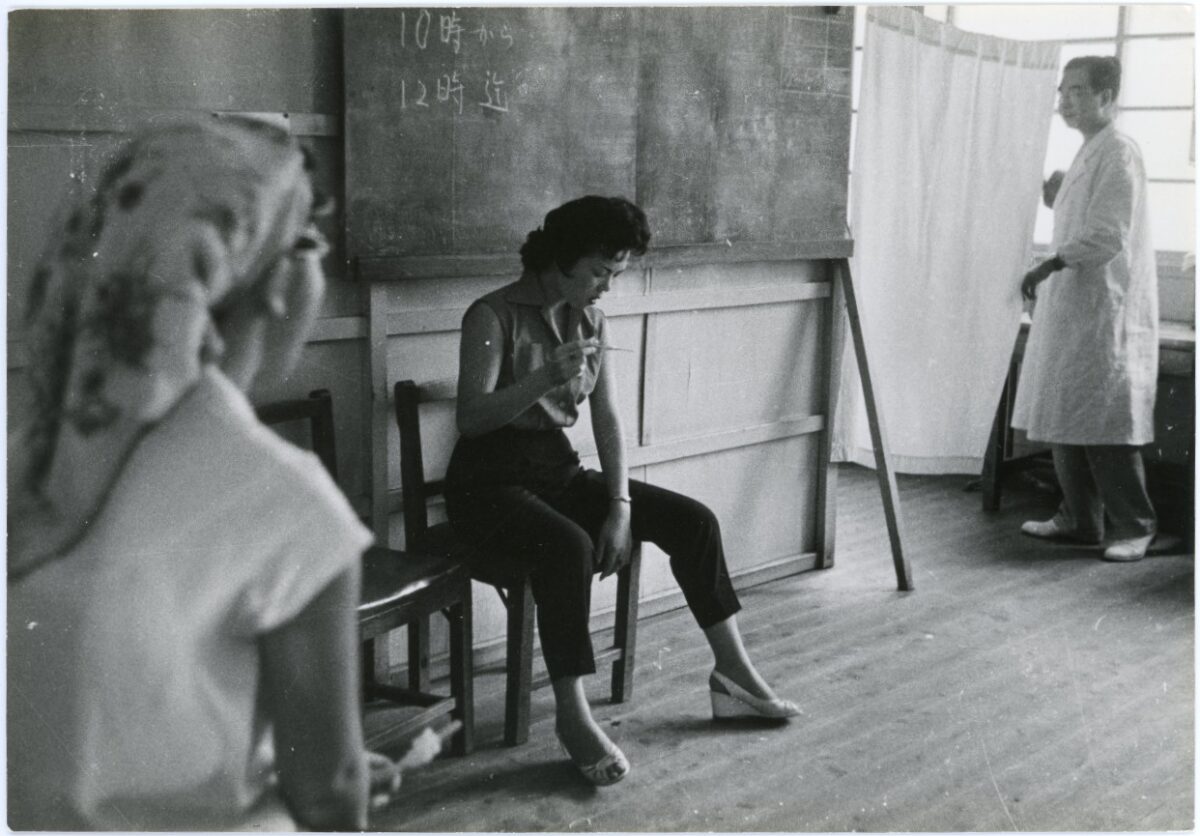
Tokiwa’s ultimate motivation was to shed light on the harsh realities faced by women whose labor involves their bodies. Her goal was to bring attention to their plight and, in doing so, to foster empathy and awareness. At the same time, she aimed to challenge the stigma attached to sex workers, asserting their humanity and dignity in the face of societal judgment. With remarkable honesty, she reflects on their labor and living conditions, weaving together personal anecdotes and the stories of the women she encountered, offering unconventional portraits of women who were typically idealized by male photographers.
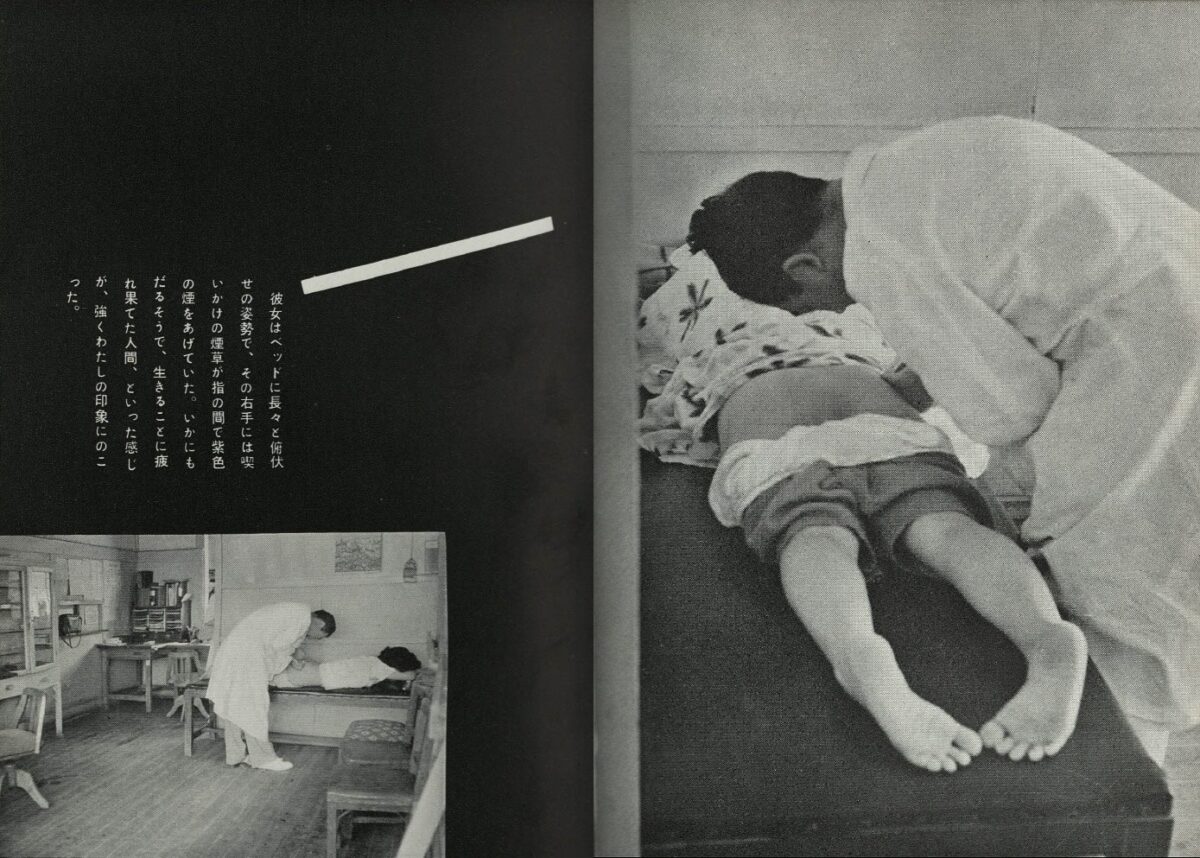
Tokiwa’s photobook not only challenged dominant narratives about sex workers and other working women but also made space for marginalized female voices, both those of her subjects and her own as a rare female photographer in a male-dominated field. Dangerous Poisonous Flowers functioned as a feminist manifesto of its time, incorporating powerful language and imagery that not only empowered women but also exposed their gender-based oppression as workers and artists. In these extensive written passages and photo sequences, she reveals the challenges of being a female photographer and the struggles she faced in completing her project.
From the opening sentence of her book, Tokiwa makes a powerful statement about gender biases in photography: “Does being a woman, rather than a man, give you any disadvantage in taking photos?”22Tokiwa, Kikenna Adabana, 12. Translation generated by Google Lens and edited by the author. These words not only challenge established stereotypes at the time but also serve as a testament to the sexist discrimination she endured at the beginning of her career. On the contrary, she believed that it was the very nature of women that made them more capable than men in documentary photography. In Dangerous Poisonous Flowers, she declares: “There is a feminine element to photography. Photographers must have a passive stance to get the subject to accept being photographed. . . . Most of my work was made because I am a woman.”23Tokiwa, Kikenna Adabana, 194. Translation generated by Google Lens and edited by the author.
Tokiwa’s photographic work evokes that belief, as we see her subjects allowing her to capture them in their most vulnerable and personal circumstances. What makes her approach unique and compelling is her empathetic gaze, which is free of idealization and marked by a sense of belonging. Empathy, in this case, is a transgressive act, as it challenges the dominant documentary tradition characterized by detachment, domination, and objectification. Instead of reinforcing the viewer’s power over the subject, Tokiwa’s gaze fosters proximity and emotional connection. The empathetic gaze is also a female gaze. Both are grounded in care, presence, and a refusal to look from a position of power, allowing the subjects to reveal their own idea of themselves. The term “empathetic gaze” emerges not as a departure from the female gaze, but rather as a way to articulate its specific emotional and political mechanisms, particularly how it invites viewers to feel with, rather than look at, the photographed subjects. In this sense, the “empathetic gaze” is both a way of seeing and engaging with the subject and an artistic practice that challenges dominant representations and redefines the relationship between viewer and subject.
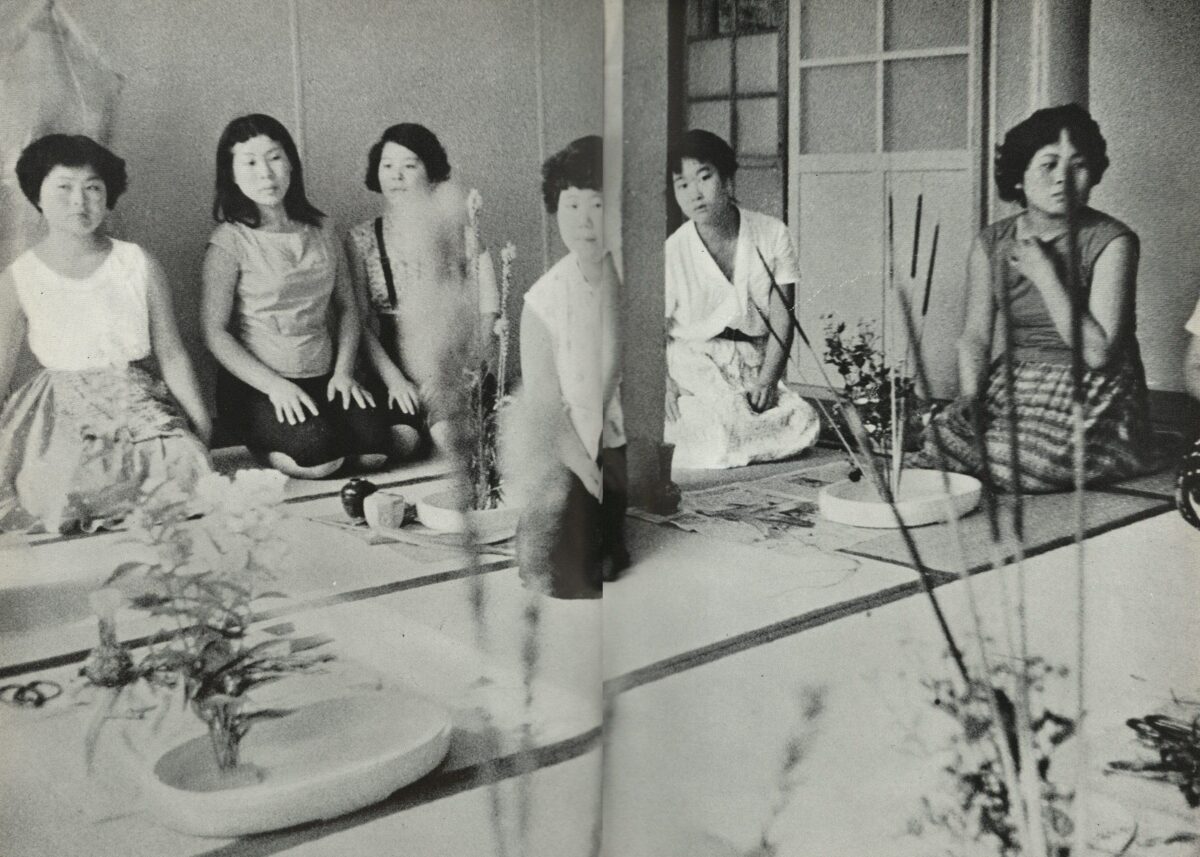
The book concludes with photographs Tokiwa took in a rehabilitation facility in Kanagawa, where young women from the red-light district were sent after the anti-prostitution law was enacted in Japan in 1956. She photographed them during their free time (working at their sewing machines, arranging flowers, eating), believing that these moments reveal their true natures. These images, accompanied by her words, also reveal a deepening compassion for the working women she had followed for several years.
This final sequence, without context, could easily depict a girls’ school. The women are shown during the day, either attending classes or playing sports, with their bright, clear faces exposed to the lens and radiating innocence. They appear relaxed and absorbed in their activities. Tokiwa is no longer hiding from her subjects. She is present in their daily lives, placing them in front of her lens, against the bright sunlight. She has become one of them. In figure 10, the girls are arranging flowers. The flowers take prominence in the foreground, and the girls seem to blend into them, almost appearing as flowers themselves, reinforcing the title of the book. This scene deeply moved Tokiwa, who writes, “The dirt of the past is washed away clean, and the innocent feelings of young girls, placed in a normal environment, are transformed into a flower arrangement. Even withered and lifeless flowers are still flowers.”24Tokiwa, Kikenna Adabana, 228. Translation generated by Google Lens and edited by the author.
This essay is the outcome of my research trip to Japan in April 2024, which took place in the context of my internship with the International Program of The Museum of Modern Art. I am grateful to curator Yamada Yuri of the Tokyo Photographic Art Museum, who introduced me to Toyoko Tokiwa’s photobook. I also want to thank Carlos Quijon, Jr., C-MAP Southeast & East Asia Fellow at the International Program for his guidance through this process. A copy of this rare publication is available in MoMA’s Library, thanks to the support of the International Program.
- 1Doryun Chong et al., eds., From Postwar to Postmodern, Art in Japan, 1945–1989: Primary Documents (The Museum of Modern Art, 2012), 50.
- 2Chong et al., From Postwar to Postmodern, Art in Japan, 58.
- 3See Kaneko Ryuichi et al., The Japanese Photobook, 1912–1990, trans. John Junkerman and Matsumoto Kaoru (Steidl, 2017).
- 4Ryuichi et al., The Japanese Photobook, 26.
- 5Tokyo Photographic Studio and School for Women.
- 6See Kelly Midori McCormick, “Tokiwa Toyoko, the Nude Shooting Session, and the Gendered Optics of Japanese Postwar Photography,” Japan Forum 34, no. 3 (2021): 383–411, https://doi.org/10.1080/09555803.2021.1923553.
- 7Carrie Cushman and Kelly Midori McCormick, “The Japanese Women Who Transformed Photography,” in I’m So Happy You Are Here: Japanese Women Photographers from the 1950s to Now, ed. Pauline Vermare and Lesley A. Martin (Aperture, 2024), 42.
- 8Cushman and McCormick, “The Japanese Women Who Transformed Photography,” 45.
- 9See Laura Mulvey, “Visual Pleasure and Narrative Cinema,” Screen 16, no. 3 (1975): 6–18, https://doi.org/10.1093/screen/16.3.6.
- 10See “Jill Soloway: The Female Gaze,” Toronto International Film Festival, Master Class, live streamed September 11, 2016, YouTube, https://www.youtube.com/watch?v=pnBvppooD9I&ab_channel=TIFFOriginals.
- 11McCormick, “Tokiwa Toyoko, the Nude Shooting Session, and the Gendered Optics of Japanese Postwar Photography,” 388.
- 12According to the book’s colophon in the copy acquired by MoMA’s International Program, the book was first published on October 20, 1957, with the 11th printing released less than a month later, on November 10, 1957. Toyoko Tokiwa, Kikenna Adabana [Dangerous Poison-Flowers] (Mikasa Shobo, 1957), 245.
- 13Pauline Vermare and Lesley A. Martin provide the English translation of the title. See Vermare and Martin, I’m So Happy You Are Here, 294.
- 14See “Toyoko Tokiwa in Conversation with Kelly Midori McCormick (2017),” in Vermare and Martin, I’m So Happy You Are Here, 393–96.
- 15Tokiwa, Kikenna Adabana, 12. Translation generated by Google Lens and edited by the author.
- 16McCormick, “Tokiwa Toyoko, the Nude Shooting Session, and the Gendered Optics of Japanese Postwar Photography,” 406.
- 17Tokiwa, Kikenna Adabana, 118–20. Translation generated by Google Lens and edited by the author.
- 18Tokiwa, Kikenna Adabana, 145. Translation generated by Google Lens and edited by the author
- 19Ross Tunney, “Liminal Spaces: US Military Base Towns in Tōmatsu Shōmei’s Japan,” paper presented at the 18th Biennial Conference of the Japanese Studies Association of Australia at the Australian National University, July 8–11, 2013, https://www.academia.edu/72836529/
Liminal_Spaces_US_Military_Base_Towns_in_Tōmatsu_Shōmeis_Japan_. - 20“There must be a real difference between how men see women and how I see them as someone of the same sex. These women never reveal to their male customers the true fabric and life under their skin. Capturing and revealing this hidden side of women—something men would never discover—is deeply meaningful, even for men, but in a different way.” Tokiwa, Kikenna Adabana, 72. Translation generated by Google Lens and edited by the author.
- 21Tokiwa, Kikenna Adabana, 89. Translation generated by Google Lens and edited by the author.
- 22Tokiwa, Kikenna Adabana, 12. Translation generated by Google Lens and edited by the author.
- 23Tokiwa, Kikenna Adabana, 194. Translation generated by Google Lens and edited by the author.
- 24Tokiwa, Kikenna Adabana, 228. Translation generated by Google Lens and edited by the author.
